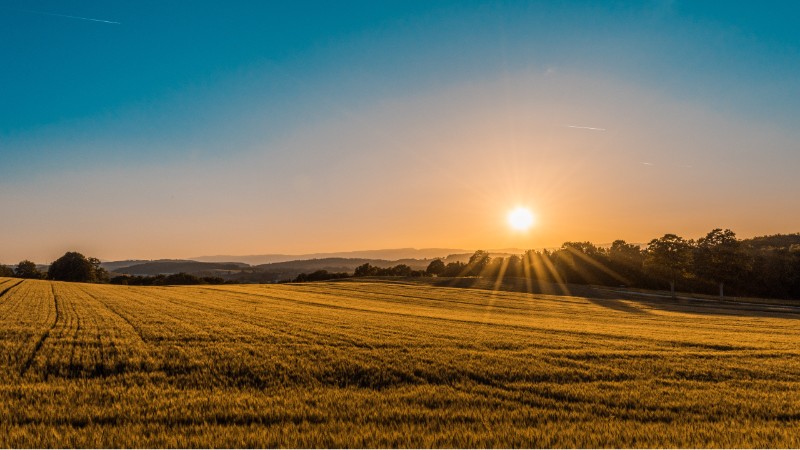How to Start a Farm & Make it Profitable?

Starting a farm is a dream for many, but it can also be challenging and daunting. From finding the right land to securing financing and figuring out what to grow, there are many important decisions to make. However, with careful planning and hard work, a farm can be a lucrative and rewarding venture. The key to success is understanding the market and increasing efficiency and profitability. Farmers can turn their passion for agriculture into a profitable business by focusing on these areas.
To start a profitable farm, research the market, choose a viable location, create a solid business plan, secure financing, and efficiently use resources. Focus on high-demand crops and livestock, establish efficient systems and processes, and build a strong brand and customer base. Continuously evaluate and adjust operations to increase profitability while maintaining sustainability.
With technological advances and increased competition, farming has changed dramatically over the years. To be successful in today’s market, it is essential to have a well-researched plan and a clear understanding of the costs involved. This article will guide you through the steps to start a farm and make it profitable, from identifying the right land to choosing crops and livestock to marketing and selling your products. Whether you are a seasoned farmer or a newcomer to agriculture, this comprehensive guide will help you achieve your goals and turn your farm into a profitable and sustainable business.
The Promise and Challenge of Starting a Farm
Starting a farm is a dream for many, offering the opportunity to turn a passion for agriculture into a profitable and rewarding venture. A farm can provide fresh, locally sourced produce and contribute to the local community and economy. It also offers the chance to work outdoors and enjoy a slower-paced lifestyle.
However, starting a farm also comes with many challenges. From securing financing and finding the right land, to choosing the right crops and livestock, there are many important decisions to make. The farming industry is also highly competitive and constantly changing, requiring a strong understanding of the market and the ability to adapt and evolve.
Running a farm requires hard work and long hours; the challenges can be physical and emotional. Drought, pests, and other natural disasters can also impact the success of a farm. It is important to understand the demands and risks involved in starting a farm and be prepared for the challenges of this rewarding venture.
Researching the Market and Choosing a Viable Location
Researching the market is crucial to the success of a farm. Understanding the demand for different crops and livestock and the competition in the area will help determine what to grow and where to sell it. This can also inform decisions about pricing and marketing strategies. Staying informed about industry trends and changes in consumer preferences is also important.
Choosing the right location for a farm is also crucial. Factors to consider include access to water and other resources, the climate and soil conditions, and the proximity to markets and transportation routes. A good location can also help reduce costs and increase efficiency, while a poorly chosen location can lead to increased costs and decreased profits.
It is also important to consider the zoning and land-use regulations in the area, as well as any potential environmental and cultural issues. For example, some areas may restrict the use of chemicals or other farming practices, while others may have strong local opposition to new farming developments. Considering these factors can help ensure that the farm is viable and successful.
Creating a Solid Business Plan
A solid business plan is essential for the success of a farm. It should outline the goals and objectives of the farm, as well as the strategies and actions necessary to achieve them. A business plan should also consider the farm’s financial aspects, including startup costs, operating expenses, and projected income.
The business plan should also consider the management structure of the farm, including staffing and hiring plans. It should outline the responsibilities of each team member and establish clear lines of communication and decision-making processes. A well-defined management structure can help ensure the farm runs smoothly and efficiently.
In addition, the business plan should include a marketing and sales strategy outlining how the farm will reach customers and sell its products. This may involve developing a strong brand, building relationships with retailers and distributors, and leveraging digital marketing strategies to reach customers. A well-executed marketing and sales strategy can help ensure the farm is profitable and sustainable in the long term.
Securing Financing for Your Farm
Securing financing for a farm is a critical step in the process of starting a profitable farm. There are many options for financing, including traditional loans from banks, grants and loans from government agencies, and alternative financing options such as crowdfunding and investment from friends and family. It is important to carefully research the various options and understand the terms and conditions of each before choosing the best option for your farm.
A strong business plan is essential in securing financing, as it provides lenders and investors with a clear understanding of the farm’s goals, strategies, and financial projections. It is also important to have a solid understanding of the costs involved in starting and running a farm and to present a realistic budget to potential lenders and investors.
In addition to securing financing, it is also important to have the plan to manage the farm’s finances effectively. This may involve setting up a budget, tracking expenses, and monitoring cash flow. Effective financial management can help ensure the farm remains profitable and sustainable in the long term.
Choosing the Right Crops and Livestock
Choosing the right crops and livestock is a key decision in starting a profitable farm. Factors to consider include market demand, climate and soil conditions, and personal interest and expertise. For example, growing crops in high demand and not widely available in the area can help increase profits, while choosing crops that are difficult to grow in the local climate can lead to decreased yields and increased costs.
It is also important to consider the resources required to grow and maintain crops and livestock, such as water, fertilizer, and labor. These costs should be carefully considered when deciding what to grow and what animals to raise, as they can significantly impact the farm’s profitability.
Choosing the right crops and livestock can also impact the farm’s sustainability. For example, environmentally-friendly farming practices, such as regenerative agriculture, can help protect the soil and water. Choosing crops and animals well-suited to the local climate and resources can help reduce costs and increase efficiency. A well-planned and balanced mix of crops and livestock can help ensure the long-term viability and profitability of the farm.
Building Efficient Systems and Processes
Building efficient systems and processes is crucial for the success and profitability of a farm. This includes developing a system for planting, growing, and harvesting crops and caring for livestock. It is important to have a plan for each process step, from seed selection to post-harvest storage and marketing.
Efficient systems and processes can help reduce costs and increase productivity by streamlining tasks and minimizing waste. This can include using technology, such as precision agriculture tools, to monitor crop growth and soil health, and implementing best animal care and management practices. The farm can continuously improve its efficiency and profitability by continually reviewing and refining systems and processes.
In addition, efficient systems and processes can help ensure the safety and quality of the farm’s products, which is essential for building a strong reputation and attracting customers. For example, implementing food safety protocols, such as Hazard Analysis and Critical Control Points (HACCP), can help ensure that the food produced on the farm is safe and of high quality. Building efficient systems and processes can help ensure the long-term viability and profitability of the farm.
Establishing a Strong Brand and Customer Base
Establishing a strong brand and customer base is essential for the success and profitability of a farm. A strong brand can help differentiate the farm from its competitors and create a positive reputation and loyal customer base. This can be achieved through consistent and high-quality products, exceptional customer service, and effective marketing and communication strategies.
To build a strong brand and customer base, it is important to understand the target market and what customers are looking for in a farm. This may involve conducting market research, attending trade shows and events, and engaging with customers through social media and other channels. By understanding customer needs and preferences, the farm can tailor its products and services to meet their needs and build a loyal customer base.
To understand customer needs, it is also important to build a strong relationship with customers. This can be done through regular communication, such as newsletters and social media updates, and by offering value-added services, such as cooking classes and farm tours. A strong relationship with customers can help ensure their loyalty and increase sales and profitability in the long term.
Continuously Evaluating and Improving Operations
Continuously evaluating and improving operations is critical to making a farm profitable and sustainable. This involves regularly reviewing and analyzing the farm’s financial performance, production processes, and customer feedback and making necessary changes to improve efficiency and profitability.
One key aspect of continuous improvement is monitoring and analyzing the farm’s financial performance, such as revenue, costs, and profit margins. This information can help identify areas where costs can be reduced, and profits increased, such as by reducing waste or improving productivity. The farm can also use this information to make informed decisions about investments, such as purchasing new equipment or expanding the business.
It is important to gather and analyze customer feedback to ensure that the farm meets customer needs and expectations. This can involve surveying customers, gathering feedback through social media and other channels, and regularly reviewing sales data. By continuously evaluating and improving operations, the farm can stay ahead of the competition and ensure its long-term viability and profitability.
Turning Your Farm into a Profitable and Sustainable Business
Starting a farm is a complex and challenging process, but it can be a rewarding and profitable business with the right planning, resources, and determination. It requires careful research, a solid business plan, secure financing, efficient systems and processes, a strong brand and customer base, and a commitment to continuously evaluating and improving operations. Following these steps and staying focused on your goals can turn your farm into a profitable and sustainable business and achieve long-term success.
Remember, success in agriculture takes time, patience, and hard work. But with the right approach and a commitment to your goals, you can turn your passion for farming into a profitable and sustainable business. Whether starting a small market garden, a large livestock operation, or anything in between, the key is to be well-prepared, stay focused, and always look for opportunities to improve and grow. With the right resources, support, and determination, you can turn your farm into a successful and profitable business and achieve your dreams.

